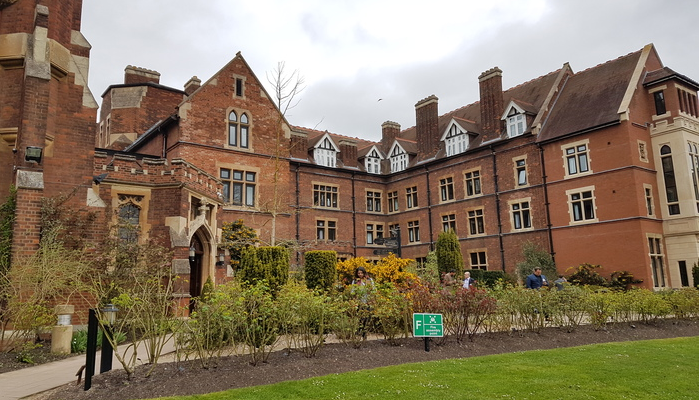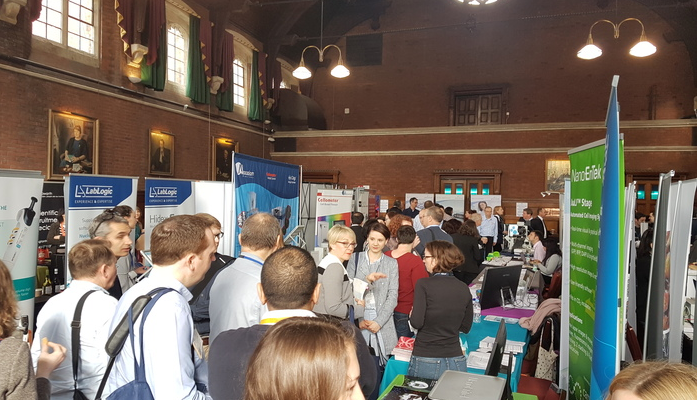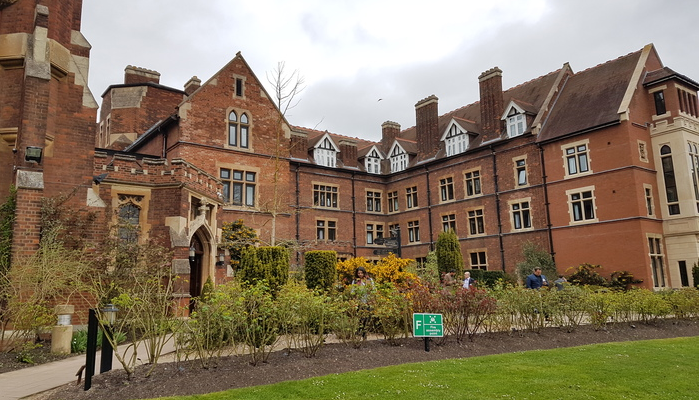
The European Laboratory Research & Innovation Group (ELRIG) is a non-profit organization that hosts a number of conferences across different locations in Europe. These shows are a coming together of key opinion leaders, delegates and vendors from a wide range of applications, and are always a fantastic opportunity to see how the landscape of life science research is expected to change in years to come.
The theme of this year’s conference, held in Homerton College, Cambridge, was ‘Cells as Models of Disease and New Therapeutic Agents’. Talks were given on a range of topics, from immunotherapies in oncology, to single cell analysis and microfluidics. As ever, BioStrata attended the conference with great interest, and here are some of our personal highlights.
Bridging the gaps
Perhaps the apex of the first day was the keynote speech given by Apollo Therapeutics chairman Dr Ian Tomlinson. Dr Tomlinson has over two decades of experience in the life science sector, and is somewhat unique for having spent these years within each of the three pillars of the industry – academia, biotechnology and pharma.
In his talk, entitled ‘Real Discovery Partnership: Making Industrial-Academic Interactions Work’, he argued that the relationship between academia, biotechnology and pharma is constantly evolving and that the traditional model of partnership between the three used to be more straightforward than it is today. Where there was interaction between them, it was minimal in nature. Often a linear path, you would have scientific developments uncovered in an academic lab, a biotech company would then be started to develop the science/technology further, and either the company itself, the technology, or a part of the technology would later be acquired by a large pharmaceutical company and hopefully manufactured on a larger scale. This chain of events was relatively unidirectional, and Dr Tomlinson remarked that academics have been somewhat tentative in their association with both pharma and biotech companies in the past, conscious that their objectives were not necessarily always aligned.
This, Dr Tomlinson claims, is now changing. The partnerships between the three are much closer now than they have ever been, they are more collaborative, and the ways in which they are entered into and conducted are becoming increasingly diverse. Dr Tomlinson makes the argument that nowadays, academic institutes are far more flexible when it comes to allowing commercial research to be undertaken in the academic lab. The industry has realized that it’s a continuum; it’s all just science in the end, and being able to conduct commercial science in an academic lab is extremely useful as it allows the science itself to be incubated for longer. To set up a biotech company, huge amounts of money has to be spent on things other than the core science: buildings, lawyers, accountants and even energy bills. By allowing commercial research to be undertaken in a facility like a university, all of that money can be spent purely on the science itself, which in many cases, gives it the opportunity to truly flourish.

New dimensions
Day two of the event brought with it another flurry of illuminating talks and speeches, the highlights for us being those outlining the latest advances in 3D cell culture, and their relevance as models for life science research. Applications for 3D cultures are far reaching, ranging from acting as a model of peripheral nerve regeneration and screening for HIF inhibitors, to uncovering the mechanism of action of potential cancer therapies. A common theme of these talks was the comparison of 2D and 3D cell culture models, with most researchers emphasising that while 3D models tend to be more physiologically relevant, no model is perfect and a combination of different approaches should always be considered.
These intriguing glimpses into some of the world’s most cutting-edge research were complemented nicely with presentations showcasing some new and exciting technologies used today within the cell culture field. Highly sophisticated incubators and imaging systems, light-sheet microscopy, magnetic 3D cell cultures, and electrospun scaffolds are just a selection of the technologies that are helping to advance the fascinating and ever-changing field. Emerging methodologies such as bioprinting, where 3D printing is used to construct living tissue, are helping us move closer to a future where sophisticated tissue-based models can become the bedrock of cutting-edge fundamental and applied scientific research. As vice president of Corning Life Sciences, Richard Eglen, remarked in his keynote speech, this is the time for scientists to go boldly, and explore new dimensions in cellular research.
At Biostrata, we’ve come to view these events hosted by ELRIG not only as spectacular opportunities to meet the industry’s brightest and best, but as chances to look forward, to consider the future of life science research, and to marvel at how innovative science can change the lives of billions.
Stay up to date with the latest developments in life science research
If you would like to remain abreast of some of the world’s most exciting and significant scientific developments and discoveries, then why not subscribe to our newsletter?




